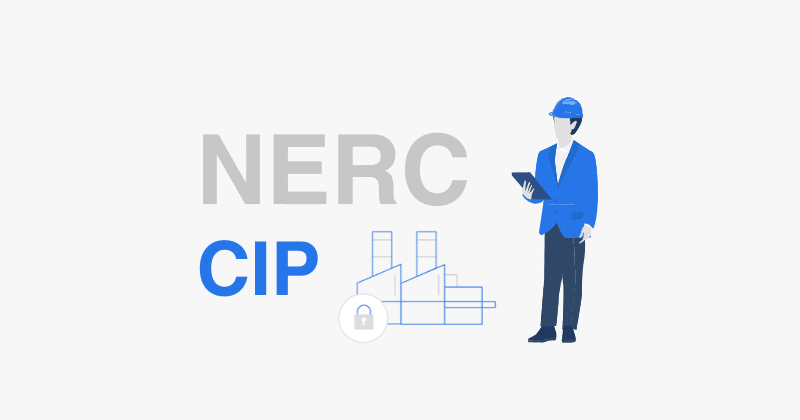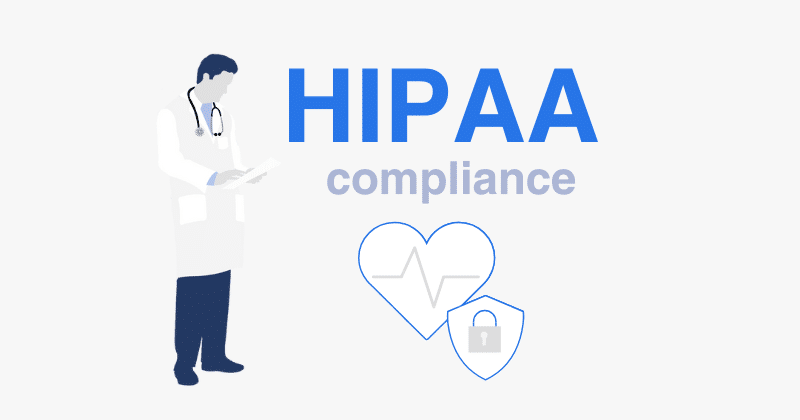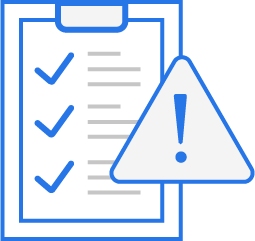Let’s talk about securing Operational Technology (OT) networks, those systems that control everything from power plants to manufacturing lines. Information Technology (IT) and OT are converging, and while that brings amazing possibilities like increased efficiency and automation, it also introduces some serious cybersecurity risks. Traditional IT security measures simply fall short when faced with the unique challenges of OT. We need a more sophisticated, targeted approach. That’s where NIST Special Publication (SP) 800-82, “Guide to Operational Technology (OT) Security,” comes into play. Think of it as your go-to guide for building resilient and secure OT networks.
In this article, we’ll dive into the key concepts and recommendations from this standard, giving you actionable insights and solutions specifically tailored for the OT cybersecurity landscape.
Why Traditional Firewalls Are Like Bringing a Toolbox to a Battlefield in OT
So, why aren’t traditional firewalls enough? Well, the world of OT is fundamentally different than IT. In IT, the main focus is on confidentiality – keeping sensitive data safe. But in OT, it’s all about safety and reliability. It is an entirely different ballgame. An IT system might be offline for a few hours for maintenance with little impact, but in OT, that downtime can lead to catastrophic consequences. We’re talking human safety, environmental disasters, serious financial losses, and huge disruptions to essential services. It’s like the difference between having a temporary office outage and a factory meltdown. This stark difference means we need security solutions that recognize and address these unique priorities.
Let’s break down why traditional firewalls just don’t cut it in OT:
- Limited Coverage: Traditional firewalls are like perimeter fences. OT systems, on the other hand, are much more distributed, often including field devices, remote units, and other IoT-connected assets that fall outside of a traditional IT perimeter. It’s like trying to protect a sprawling city with just a single fence.
- Protocol Blindness: OT systems use specialized communication protocols, like Modbus, DNP3, and PROFINET, that most traditional firewalls don’t understand. It’s like trying to have a conversation in a language the firewall doesn’t know. This can lead to sophisticated attacks slipping through undetected.
- Performance Issues: Advanced firewalls often rely on deep packet inspection, which can introduce latency. But in many OT systems, real-time responsiveness is crucial. This latency could have knock-on effects, impacting control stability and reliability. It’s like putting a speed bump in the middle of a highway.
- Static vs. Dynamic Environments: OT environments tend to be more static than IT, with long-lived assets that have less frequent patching cycles. Traditional IT solutions are designed for more dynamic systems, which makes them less suited for the OT landscape and can lead to outages if implemented without fully analyzing their impact.
A Risk-Based Approach: Your Compass in the OT Security Journey
NIST SP 800-82 emphasizes a risk-based approach to OT security, which is a continuous cycle, not just a one-time fix. It’s like planning a road trip: you need to understand where you are going before you start driving.
A risk-based approach to OT security involves:
- Framing the OT Environment (Section 4.1.1): This initial step is critical. You need to deeply understand your unique OT environment: what are your critical systems and components? What are their missions and business needs? What specific risks do they face? You’ll need to establish your risk tolerance and gather all stakeholders. Think of it like assessing land before you build on it – you need to know the lay of the land before building a house.
- Assessing Risks (Section 4.1.2): Once you know your OT environment, it’s time to identify potential risks. What are the vulnerabilities? What’s the likelihood of them being exploited? What could be the impact? Consider impacts on safety, health, the environment, and business continuity. Tools like the MITRE ATT&CK for ICS framework can help identify common attack patterns, while resources like the National Vulnerability Database (NVD) can aid in identifying specific vulnerabilities.
- Responding to Risks (Section 4.1.3): Now it’s time to decide what you are going to do about the identified risks. You need to choose and implement appropriate controls. These could be anything from patching vulnerable software and implementing network segmentation to using strong access controls and developing incident response plans. Decisions must be based on your risk appetite and must be documented.
- Monitoring Risks (Section 4.1.4): Continuously monitor your security controls to ensure that they remain effective. This means regularly reviewing logs and audit records, performing periodic testing, and updating your threat intelligence to remain aware of new threats. This should be a continuous cycle that is fed back into a continuous improvement plan, which includes re-evaluating risk framing if needed.
This approach ensures that your limited resources are focused on addressing the most significant risks to your operations. Think of it as prioritizing your tasks – tackling the most critical ones first.
Compliance Labs can help you through each step, providing you with expert guidance and robust risk management methodologies to help you develop and implement your OT security strategy.
Key Architectural Elements for Securing Your OT Environment
NIST SP 800-82 highlights a layered, defense-in-depth approach. It’s like securing a castle – not just one wall, but multiple layers. This acknowledges that any single security layer can be breached, making multiple layers crucial.
Here are some key elements to incorporate into your OT networks:
Network Segmentation and Isolation (Section E.1)
This is foundational to OT security. Segmenting your OT network means dividing it into distinct zones or levels, each with its own security controls. It’s like dividing a house into rooms – if an intruder gets into one room, they can’t easily get into the others. This approach should be based on risk and/or functionality.
Common ways of doing this are:
- Purdue Model: An older method that involves levels based on operational function.
- IEC 62443 standard: recommends implementing Zones, Subzones, and Conduits for effective segmentation.
To enforce segmentation, you can use:
- Firewalls (Section E.1.1): Smart firewalls with stateful and deep packet inspection are needed to limit communication between segments and allow only authorized traffic. They help prevent lateral movement within the OT environment. Some firewalls can understand OT-specific protocols to provide a greater level of security.
- Unidirectional Gateways (Section E.1.2): Also called data diodes, these are like “one-way streets” for data, only allowing it to flow in one direction. They’re ideal for isolating sensitive OT networks from external networks. While useful, these also make bidirectional communication difficult and require careful planning.
- Virtual Local Area Networks (VLANs) (Section E.1.3): These can make implementing network security easier, especially when physical segmentation is too difficult or costly. However, they’re vulnerable to lateral movement from a compromised system.
- Software Defined Networks (SDN) (Section E.1.4): SDNs help reconfigure networks dynamically, enhancing segmentation when used with switches, and creating a unified and abstracted control plane that simplifies management.
Defense-in-Depth Architecture Capabilities (Section 5.2)
This strategy accepts that no single security measure is foolproof, making multiple, overlapping layers critical. Think of it like wearing layers of clothing on a cold day. NIST SP 800-82 highlights several layers:
- Security Management (Section 5.2.1): This is the overall structure, including policies, procedures, and governance for the entire OT security program. This is done through establishing a charter, creating procedures for changes, setting rules for proper system use, and documenting responsibilities. This program should be based on risk and be approved by leadership.
- Physical Security (Section 5.2.2): Don’t forget physical security! Implement access controls, surveillance, environmental monitoring systems, and personnel screening to protect your assets from unauthorized access, tampering, theft, or damage.
- Network Security (Section 5.2.3): This is more than just segmentation. You need to consider things such as wireless security, remote access security, and continuous monitoring.
- Hardware Security (Section 5.2.4): Make sure your hardware is secure using measures such as secure boot, firmware controls, and tamper-resistant hardware. The goal is to prevent an attacker from compromising the hardware itself.
- Software Security (Section 5.2.5): Prevent malware and unauthorized software changes through application allowlisting, consistent patching, and secure code development.
Zero Trust Architecture (Section 5.2.3.4)
As traditional network perimeters become less useful, Zero Trust Architecture (ZTA) is becoming increasingly valuable. Think “never trust, always verify,” requiring continuous validation for every access request, regardless of its origin.
Here’s how it applies to OT:
- Microsegmentation: Divide networks into multiple zones with specific access requirements.
- Least Privilege Access: Access is granted only to those who need it for specific job functions.
- Continuous Authentication: Each action is continuously monitored and re-authenticated to ensure access remains valid.
Applying the Cybersecurity Framework to OT
The NIST Cybersecurity Framework (CSF) is a flexible tool that helps you manage and improve your cybersecurity posture. Think of it as a framework that guides you on the steps to improve your security.
It’s centered around five core functions:
- Identify (ID) (Section 6.1): Develop an understanding of your systems, people, assets, and data to manage cybersecurity risk. This includes asset management, governance, risk assessments, and supply chain risk management.
- Protect (PR) (Section 6.2): Implement safeguards to ensure the delivery of critical services. This includes access control, training, data security, and protective technology.
- Detect (DE) (Section 6.3): Identify cybersecurity incidents by monitoring anomalies, events, and security systems.
- Respond (RS) (Section 6.4): Take action on detected incidents, including planning, communications, analysis, mitigation, and improvement.
- Recover (RC) (Section 6.5): Develop plans for resilience and restoring capabilities impaired by incidents. This includes recovery planning, improvements, and communications.
The CSF is great for those wanting to move past basic compliance and take a more holistic approach to security. It provides a framework, but a risk analysis will be required to select controls.
Real-World Scenarios: Learning From Past Mistakes
NIST SP 800-82 includes an appendix of real-world incidents that show how important good OT security is. These are valuable lessons of what can happen when things go wrong:
- Maroochy Shire Sewage Spill (Section C.3.1): This event shows the importance of strong access controls, as an employee was able to gain remote access to a sewage system. This also highlights the need for a strong security program that extends to the physical realm of the control system.
- Ukrainian Power Grid Attack (Section C.3.1): This attack caused power outages that affected over 225,000 customers and demonstrates the need to limit unauthorized access and ensure system communications are secure through encryption. This event also shows the impact an attack can have, requiring a strong incident response plan.
- Norsk Hydro Ransomware Attack (Section C.3.1): This attack impacted operations and showed the importance of data backup and recovery plans, as well as business continuity planning, as well as how important a good security posture is to make an attack less likely to occur.
Actionable Steps for Improving OT Security Now
Here are some immediate steps you can take to improve OT cybersecurity today:
- Conduct a Detailed Risk Assessment: Start with a thorough evaluation of your OT environment and identify your key assets, vulnerabilities, and potential threats. Use resources like the NVD and MITRE ATT&CK for ICS.
- Prioritize Network Segmentation: Segment your OT network to limit the impact of any potential breach. Utilize VLANs, firewalls, and unidirectional gateways to isolate critical systems.
- Implement Strong Access Controls: Enforce strict access policies, use multi-factor authentication for remote access, and implement role-based access controls.
- Regular Testing and Updating: Establish a process for testing and updating software, firmware, and security mechanisms. Verify that all devices are patched.
- Invest in Continuous Monitoring and Incident Response: Continuously monitor network traffic and event logs to identify suspicious behavior, and develop incident response procedures that include steps for recovery.
Looking Ahead: The Future of OT Security
The integration of IT and OT will only continue to accelerate as organizations adopt new technologies. Organizations need to be proactive, forward-thinking, and diligent in their security practices as OT becomes more interconnected and intelligent, and the threat landscape continues to evolve.
Conclusion: Taking the First Steps Toward Securing Your OT Environment
Securing OT environments requires more than just applying basic IT practices. You need to deeply understand the unique challenges and risks of OT and use a tailored approach based on the guidance provided by NIST SP 800-82.
It’s important to note that this is a journey that requires collaboration, continuous improvement, and expert assistance. Compliance Labs can help you through the process, leveraging our expertise and industry knowledge to provide customized solutions that meet your specific needs.






